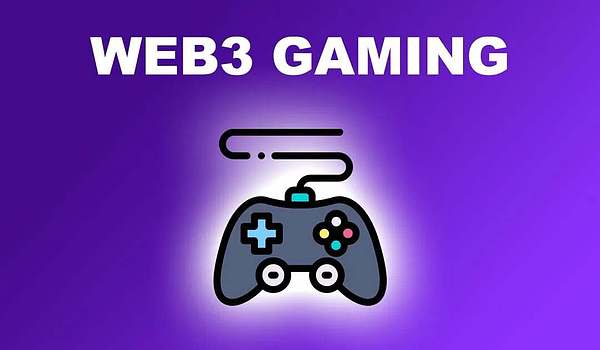Source: Blockchain Knight
The first quarter of 2024 revived investor sentiment towards the Crypto asset market. With the end of the landmark lawsuit against the SEC (U.S. Securities and Exchange Commission), U.S. investors finally have access to spot BTC ETFs.
This opens the door to Web3 for large institutional investors: Weekly net cash inflows into U.S. ETFs have repeatedly exceeded initial forecasts, triggering a bull rally in BTC to an all-time high price.
While the overall market is optimistic, investment in Web3 games remains cautious, with $288 million invested in the first quarter. In addition, the industry also ushered in a windfall in April-a staggering $988 million, the highest monthly investment since January 2021.
The underlying reasons for this year's surge in investment appear to be similar to those in early 2021. More than three years ago, driven by the emergence of new technologies such as NFT, the GameFi industry was expected to usher in a round of explosive growth.
The total market value of NFTs has soared 29 times from 2020 to 2021, and at the same time, the total value locked in DeFi protocols has reached an all-time high.
Similarly, the sharp increase in committed investments in April 2024 is also driven by Ethereum's recently implemented new technology of account abstraction and the general rise of Layer3 solutions.
Enterprise activity is extremely active: A16z is raising a $600 million game fund, Bitcraft Ventures is following up with its third $275 million GameFi fund, and Ubisoft studios are increasingly interested in blockchain partnerships and joint ventures.
From all indications, Web3 games are ready to take off.

This is evidenced by exceptionally strong fundamental user engagement metrics. The average daily unique active wallets for gaming DApps reached almost 3 million, a record high.
According to DAppRadar, one in three people who logged into DApps in April did so primarily for gaming, indicating a strong interest in fair gaming, “play to win” and “play to share” business models.
Meanwhile, the number of active blockchain gamers grew 83% to 90.3 million users in 2024.
Why do market participants and venture capitalists equate the significance of account abstraction and Layer3 with the groundbreaking impact of NFTs and DeFi?
As early as 2021, blockchain games have been trying to find a unique way to distinguish themselves from their Web2 predecessors.
This exploration of value propositions is reflected in NFTs, which provide users with true data sovereignty and digital asset ownership claims, while DeFi provides a way to monetize a large number of native GameFi tokens.
In 2024, it is no longer the novelty of the technology or the lack of sustainable monetary returns that will hinder the future development of Web3 games.
Ironically, users like new technologies in the opposite way, and they are annoyed by their conspicuousness.
Venture investors are not betting on technology or in-app economic layers. Instead, they see account abstraction and Layer3 solutions as the technological catalyst for achieving a superior GameFi user experience.
On paper, Account Abstraction replaces non-custodial wallets with programmable smart contracts. In practice, this provides unprecedented flexibility to DApps developers.
For example, by removing the reliance on seed phrases and introducing arbitrary verification, AA allows players to create trusted decentralized accounts using familiar options such as email or Google accounts.
Second, it maintains the integrity of the in-game experience without compromising security, eliminating the need to individually approve each purchase within the game or make purchases from external wallets.
Finally, account abstraction introduces sponsored transactions, eliminating the most notorious "gas fee" in the DApps user experience.
Even in cases where network activity is low and gas fees are negligible, users' cognitive bias towards unpredictable and unexpected additional fees will hinder them from using DApps more.
Linking fiat currency cards to seamlessly pay gas fees, or even using developers' funds directly to pay related commissions, are important steps towards better user experience and better user retention.
Similarly, vertical scaling in Ethereum Layer3 solutions (also known as application-specific blockchains) can shorten transaction execution times and radically reduce gas fees, thereby achieving zero gas fee functionality.
Layer3 solutions combined with account abstraction bring GameFi true free games, seamless experiences, and a user experience that is indistinguishable from the Web2 gaming process.
With the popularity of new technologies and the support of a large amount of funds injecting new vitality into this field, it is only a matter of time before these fundamental elements become the next major wave of GameFi products.
If blockchain gaming becomes a reality, it will be at the forefront of a new development model that puts user experience first.
Technical advances such as Layer3 solutions and account abstraction are entering the initial technology stack of most GameFi products, and Web3 is moving towards a new stage of widespread adoption. Tomorrow's blockchain will become an alternative to Web2, and a better choice.
 Alex
Alex
 Alex
Alex Edmund
Edmund Xu Lin
Xu Lin Jasper
Jasper Alex
Alex Nulltx
Nulltx ABGA
ABGA Cointelegraph
Cointelegraph Bitcoinist
Bitcoinist Bitcoinist
Bitcoinist